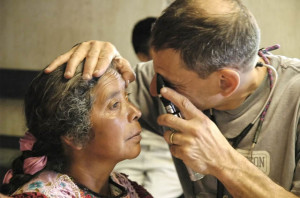 Among medical specialties, some are more prestigious than others. You can generally tell which ones are more prestigious by how well they pay. Surgery and cardiology, for example, rank at the top of the prestige scale. Psychiatry and dermatology are near the bottom.
Among medical specialties, some are more prestigious than others. You can generally tell which ones are more prestigious by how well they pay. Surgery and cardiology, for example, rank at the top of the prestige scale. Psychiatry and dermatology are near the bottom.
One can also ask if some diseases are considered more prestigious than others, in the opinion of the medical profession.
A Norwegian doctor, Dag Album, has been investigating the prestige of both diseases and medical specialties for many years. In one study, he asked a cross-section of physicians and medical students to rank the prestige of 38 specific diseases, as well as medical specialties. He found that certain diseases consistently ranked at the top (myocardial infarction, leukemia, brain tumors) and others at the bottom (fibromyalgia, anxiety neurosis). (See complete list below.) Among medical specialties, neurosurgery and thoracic surgery ranked highest. At the bottom were geriatrics and dermatovenerology (the treatment of skin diseases associated with venereal diseases).
What makes a disease or specialty more prestigious?
One relatively objective way to view the ranking of specialties is to consider their urgency. The aim of primary care physicians, pediatricians, and psychiatrists is to keep their patients healthy. Although some of their patient encounters surely do make the difference between life and death, those are generally the exception. On the other hand, a patient only sees a brain or heart surgeon when his or her life depends on undergoing a successful operation.
Dr. Album draws a similar conclusion from his study. The more highly ranked specialties and diseases involve vital organs. Those ranked lower involve chronic conditions. But he also points out that age and the bodily location of disease contribute to high and low prestige (emphasis added):
Our interpretation of the data is that diseases and specialties associated with technologically sophisticated, immediate and invasive procedures in vital organs located in the upper parts of the body are given high prestige scores, especially where the typical patient is young or middle-aged. At the other end, low prestige scores are given to diseases and specialties associated with chronic conditions located in the lower parts of the body or having no specific bodily location, with less visible treatment procedures, and with elderly patients.
Read more
 The New York Times has a five part series on anosognosia, a word of Greek origin where “nosos” means disease and “gnosis” means knowledge (plus the initial “a” for not). Patients with this medical condition don’t know they have a disease and appear unaware of their symptoms, which can be as dramatic as paralysis or blindness to half their visual field.
The New York Times has a five part series on anosognosia, a word of Greek origin where “nosos” means disease and “gnosis” means knowledge (plus the initial “a” for not). Patients with this medical condition don’t know they have a disease and appear unaware of their symptoms, which can be as dramatic as paralysis or blindness to half their visual field.











